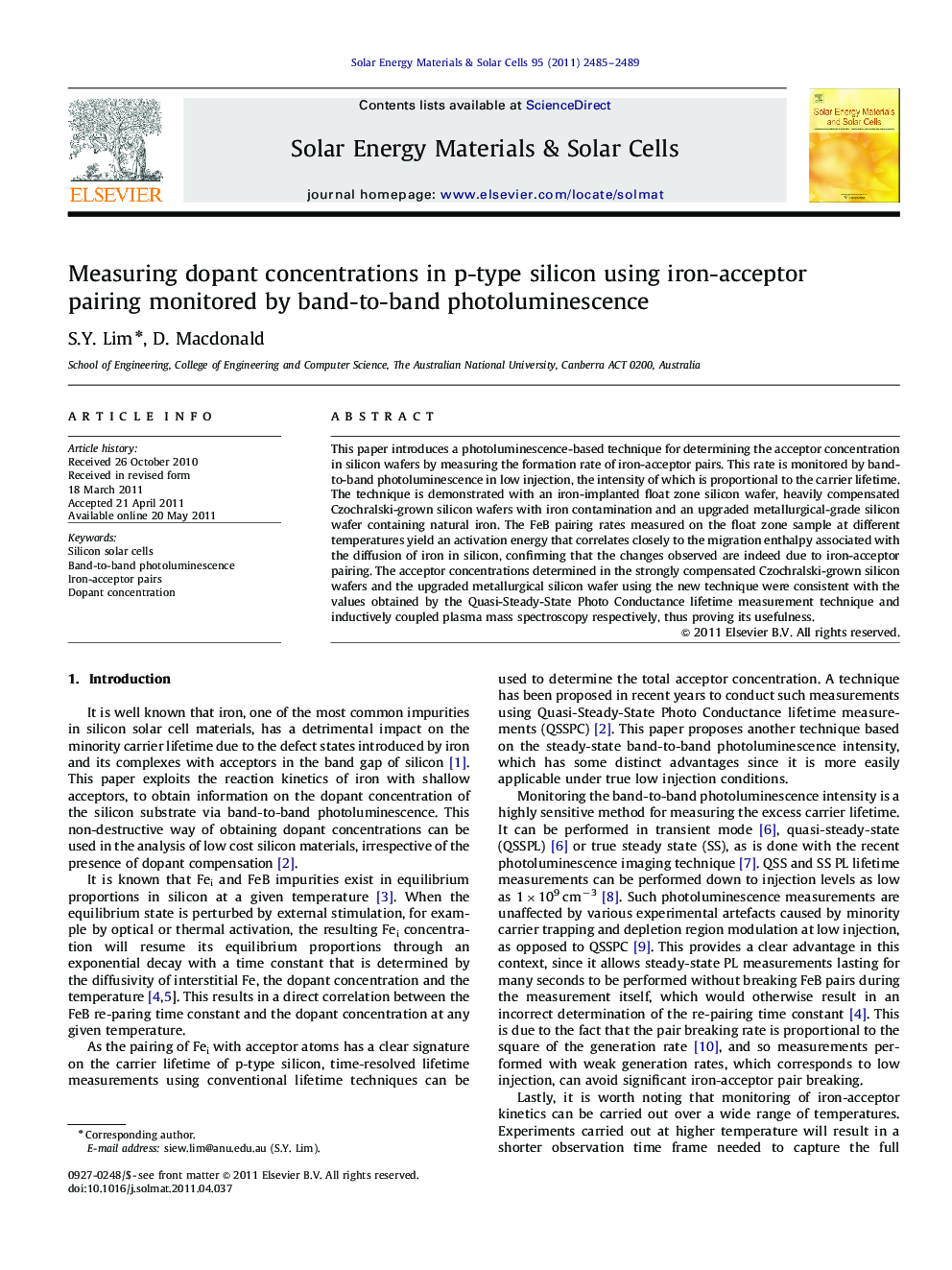| Article ID | Journal | Published Year | Pages | File Type |
|---|---|---|---|---|
| 78810 | Solar Energy Materials and Solar Cells | 2011 | 5 Pages |
This paper introduces a photoluminescence-based technique for determining the acceptor concentration in silicon wafers by measuring the formation rate of iron-acceptor pairs. This rate is monitored by band-to-band photoluminescence in low injection, the intensity of which is proportional to the carrier lifetime. The technique is demonstrated with an iron-implanted float zone silicon wafer, heavily compensated Czochralski-grown silicon wafers with iron contamination and an upgraded metallurgical-grade silicon wafer containing natural iron. The FeB pairing rates measured on the float zone sample at different temperatures yield an activation energy that correlates closely to the migration enthalpy associated with the diffusion of iron in silicon, confirming that the changes observed are indeed due to iron-acceptor pairing. The acceptor concentrations determined in the strongly compensated Czochralski-grown silicon wafers and the upgraded metallurgical silicon wafer using the new technique were consistent with the values obtained by the Quasi-Steady-State Photo Conductance lifetime measurement technique and inductively coupled plasma mass spectroscopy respectively, thus proving its usefulness.
Graphical abstractFigure optionsDownload full-size imageDownload as PowerPoint slideHighlights► A new technique to determine dopant density using PL was presented ► NA derived using PL at low injection corresponds to that derived at constant Δn. ► Technique was demonstrated in a variety of silicon materials.
